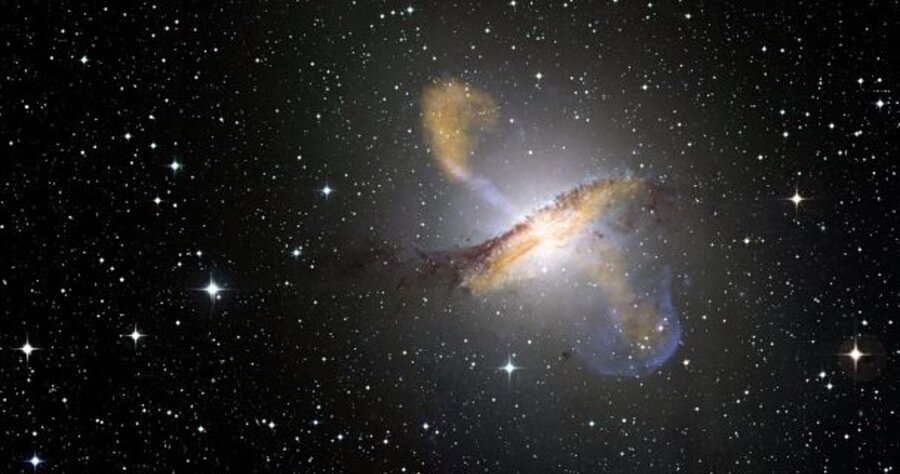Unveiling a black hole's jets for all to see
Loading...
Sometimes it's tempting to wonder why astronomers need all those different telescopes working at different wavelengths.
A new image released this week by the European Southern Observatory gives a beautiful illustration of what happens when data of the same object, viewed at different wavelengths, are combined.
It's a shot of a galaxy known as Centaurus A, alias NGC 5128. It's 14 million light-year away in the constellation Centaurus. It's the fifth brightest galaxy in the sky, so it's an easy target for most amateur astronomers.
And it's also a radio galaxy -- with strong emissions appearing in radio maps as jets coming from the galaxy's core. The jets signal the presence of a supermassive black hole at the galaxy's center -- and a busy one at that. It's in the process of gobbling up another galaxy that passed a bit too close to Centaurus A.
Astronomical images these days come from high-tech, frosty-temperature versions of digital cameras. While some objects may have very faint coloration, astronomers tend to assigned so-called "false" colors to the images to help them distinguish different features.
In this case, the added features are the jets of particles rocketing outward at roughly half the speed of light along the spin axis of the supermassive black hole.
Astronomers at the ESO took a visible image of the galaxy, then superimposed and tinted data from its APEX submillimeter telescope in Chile and from NASA's Chandra X-Ray observatory.
APEX data on the radio emissions from the rapidly moving particles appear in orange.
The purple haze toward the tips of the jets represent x-ray emissions from collisions as the high-speed particles smack into gas surrounding the galaxy.
This is at least as good as anything Jean-Luc Picard ordered "on screen!"





